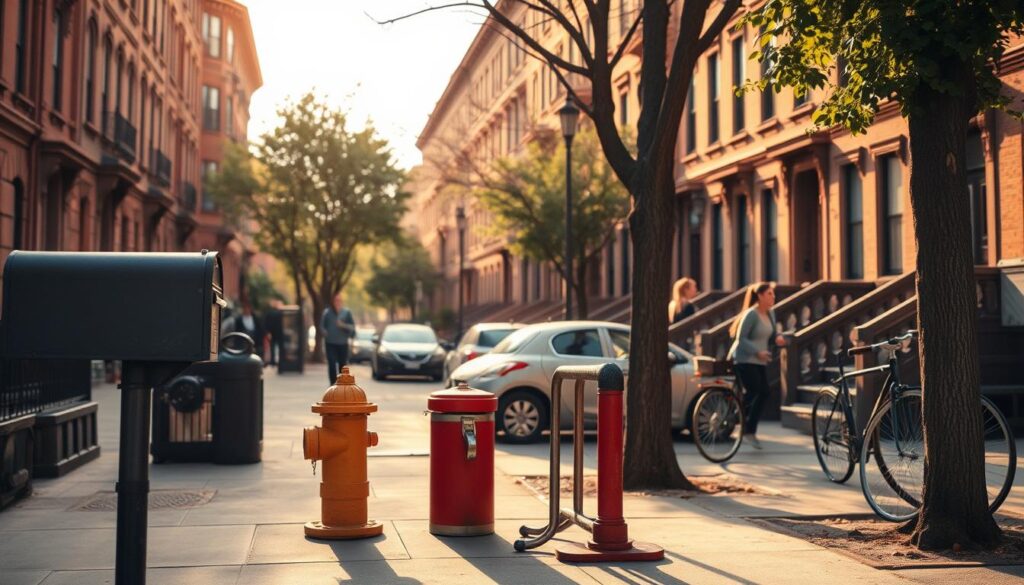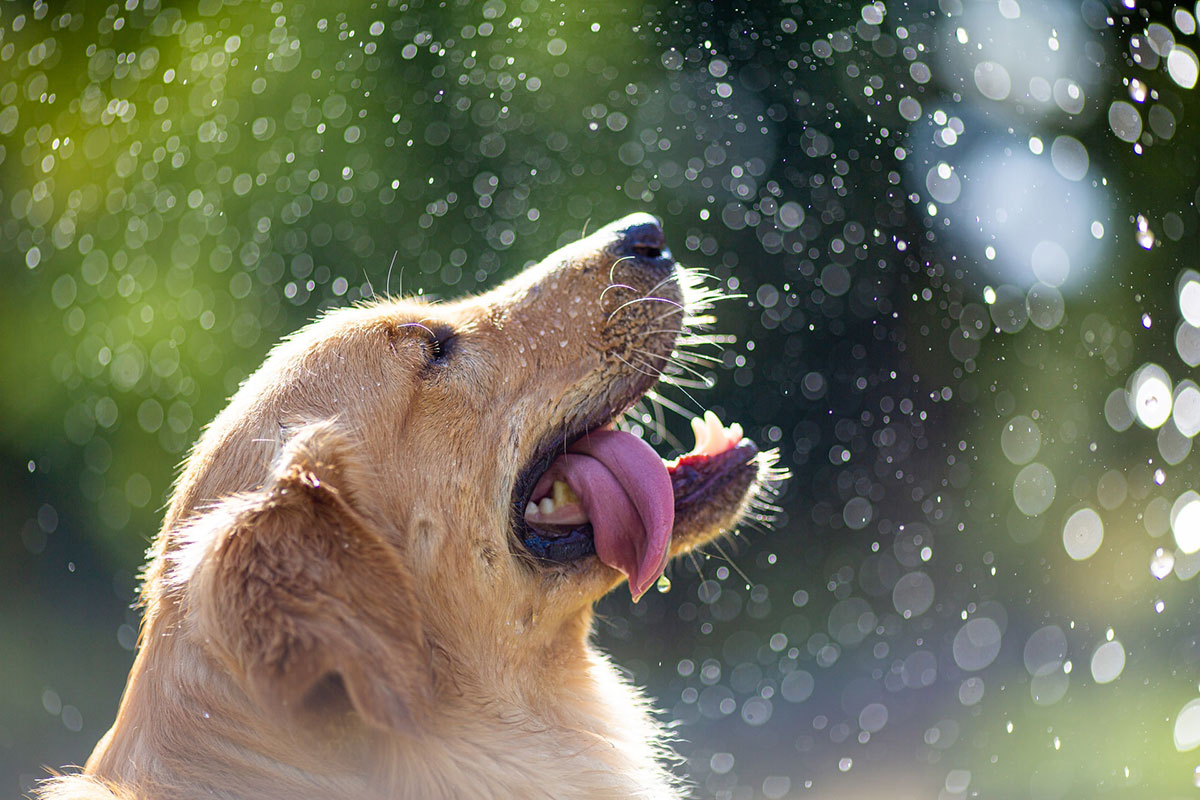Dog owners often face the challenge of their pets barking excessively during walks. While barking is a natural behavior for dogs, it can become a significant issue when it occurs frequently during outings.
Understanding the reasons behind this behavior is crucial to addressing it effectively. This article aims to provide dog owners with practical training tips and prevention strategies to minimize barking during walks.
Key Takeaways
- Understand why your dog barks during walks.
- Learn effective training techniques to reduce barking.
- Discover strategies to prevent barking before it starts.
- Improve your dog walking experience with practical tips.
- Enhance your relationship with your dog through better communication.
Understanding Why Dogs Bark During Walks
Dogs bark for many reasons during walks. Knowing these reasons helps solve the problem. Barking is how dogs talk, but it can be a problem if it doesn’t stop.
Natural Canine Communication vs. Problem Barking
Barking lets dogs show feelings like excitement, fear, or alertness. But, if it’s too much or caused by anxiety or protecting territory, it’s a problem.
The Impact of Barking on Your Walking Experience
Barking during walks can upset both the dog and the owner. Stress for both is a big worry, making walks less fun.
Stress for Both Owner and Dog
The stress from barking can make walks tense. It’s not as enjoyable for the dog and owner.
Neighborhood Considerations
Also, too much barking can upset the neighborhood. It might lead to complaints or bad feelings with neighbors.

Common Triggers for Barking on Walks
It’s important to know why your dog barks on walks to train them better. Dogs bark for many reasons. Finding out why your dog barks is the first step to fixing the problem.
Fear and Anxiety Triggers
Fear and anxiety make dogs bark on walks. They might bark at things they see as threats or feel uneasy about.
Loud Noises and Sudden Movements
Loud sounds and quick movements can scare dogs, making them bark. Getting used to these sounds can help them feel less scared.
Unfamiliar People and Animals
Meeting new people or animals can also make dogs bark. Training tips can help handle these situations better.
Excitement and Overstimulation
Some dogs bark because they’re excited or too stimulated. This can happen when they see other dogs, people, or explore new places. Keeping their excitement in check is key.
Territorial and Protective Responses
Dogs may bark to protect their territory or family. Understanding and training their protective instincts can help lessen this behavior.
Attention-Seeking Behaviors
Some dogs bark to get attention from their owners. Ignoring the barking and rewarding calm behavior can help stop this.

Assessing Your Dog’s Specific Barking Pattern
To tackle your dog’s barking on walks, start by understanding their barking pattern. Learn when, why, and how they bark.
Creating and Using a Barking Journal
Keeping a barking journal is a great way to track your dog’s barking. Write down the time, place, and what might make them bark. This helps spot patterns and understand why they bark.
Identifying Patterns and Specific Triggers
Looking at your journal, you’ll see patterns and triggers for your dog’s barking. It might be due to excitement, anxiety, or alerting to something. Knowing these helps you plan how to stop the barking.
Understanding Your Dog’s Body Language Cues
It’s also key to understand your dog’s body language. Watch their posture, facial expressions, and tail when they bark. This tells you how they’re feeling and helps you meet their needs.
Pre-Walk Preparation Strategies
To enjoy a peaceful walk with your dog, it’s key to prepare well before. Good pre-walk prep can make walks better, with less barking. It makes the whole experience more enjoyable.
Physical Exercise Before Walks
Getting your dog to exercise before walking helps. It burns off energy that might lead to barking. Playtime in the yard or fetch can do the trick.
Mental Stimulation Techniques
Mental play is also important. Puzzle toys, scent games, or obedience training keep your dog’s mind busy. This can reduce barking during walks. For more tips, check out training guides.
Establishing a Calm Pre-Walk Routine
Having a calm routine before walks is essential. It tells your dog it’s time to relax. This can include:
Relaxation Exercises
Try relaxation exercises like deep breathing or massage. These calm your dog before the walk.
Consistent Departure Cues
Use consistent departure cues to signal walk time. This reduces excitement and barking. Being consistent makes your dog feel secure and ready.
By using these strategies, you can cut down on your dog’s barking. This makes walks more fun for both of you.
Essential Equipment for Bark-Free Walks
Having the right equipment can make dog walks better, reducing barking. The right gear makes walks comfy for you and your dog. It also helps cut down on barking caused by excitement, anxiety, or outside noises.
Selecting the Right Leash and Harness
Choosing the right leash and harness is key. A good harness can stop pulling and barking caused by tension or excitement. Look for a harness that spreads the force across the dog’s chest and shoulders, not just the neck. For leashes, pick durable materials and grips that are easy on your hand.
Training Tools That Can Help
There are many training tools that can help reduce barking on walks. These include:
Treat Pouches and Clickers
Treat pouches make it easy to reward good behavior. Clickers give a clear signal when your dog does something right, helping you communicate better.
Head Halters and Front-Clip Harnesses
Head halters gently guide your dog’s head to stop pulling. Front-clip harnesses make pulling uncomfortable, helping to reduce barking.
Equipment to Avoid: Controversial Tools
Some tools, like choke collars and prong collars, are not recommended. Avoid tools that could hurt or upset your dog, as they might make barking worse. Use positive reinforcement and humane training tools instead.
Barking During Walks: Prevention Strategies and Training Tips
Teaching your dog to walk quietly needs a mix of prevention and training tips. Good dog training is about stopping bad behavior before it starts. This way, you can lessen your dog’s barking on walks.
Proactive vs. Reactive Training Approaches
A proactive training approach stops barking before it starts. It’s better than reacting after the barking happens. This method helps your dog get used to things that might make them bark.
To use a proactive strategy, know what makes your dog bark. It might be excitement, fear, or something outside. Knowing this lets you train your dog to handle these things better.
Setting Realistic Training Milestones
Setting realistic training milestones is key to success. Break down training into easy steps. This lets you see how your dog is doing and change your plan if needed.
For example, if your dog barks at other dogs, a goal could be to bark less when they see another dog. Celebrating small wins keeps training fun and encouraging.
Creating a Progressive Training Schedule
A progressive training schedule makes training fit your dog’s growth. It gets harder as your dog gets better.
Daily Practice Routines
Being consistent in training is important. Daily routines help your dog remember what they’ve learned. This makes training last longer.
Weekly Progress Assessment
Checking your dog’s progress weekly is important. It shows you what needs work and lets you change your training plan.
Using proactive training, setting clear goals, and a growing training plan can really help. Remember, patience and regular practice are essential for training your dog.
The “Look at Me” Command Training
The “look at me” command is a key tool in dog training. It helps shift your dog’s focus away from things that make them bark.
Teaching Focus and Attention Skills
First, hold a treat near your dog’s nose and slowly move it towards your face. As they follow the treat with their eyes, they’ll naturally look at you. Say “look at me” the moment they make eye contact, then give them the treat.
Redirecting Attention from Potential Triggers
When your dog gets the hang of it, practice in places that might make them bark. Use the “look at me” command to keep their focus on you.
Practicing in Increasingly Challenging Environments
Practice the “look at me” command in different places to help your dog learn it everywhere.
Indoor Practice Sessions
Start indoors where there are fewer distractions.
Backyard and Low-Distraction Areas
Then, move to your backyard or places with fewer distractions.
Neighborhood and High-Distraction Areas
Lastly, practice in your neighborhood or places with lots of distractions. This helps reinforce the command in real-life situations.
Desensitization Techniques for Common Triggers
Desensitization techniques can greatly reduce your dog’s reactive barking. It involves slowly exposing your dog to triggers that cause barking. Start from a safe distance or at a low intensity.
Gradual Exposure Training Methods
Gradual exposure is a key part of desensitization. It means creating a safe space for your dog to get used to the trigger. Begin with low-intensity exposure and slowly increase it, watching your dog’s reaction closely.
Counter-Conditioning Strategies
Counter-conditioning works well with desensitization. It makes your dog associate the trigger with something good, like treats or praise. Counter-conditioning helps your dog see the trigger as positive, which reduces barking over time.
Working with Specific Trigger Categories
Different triggers need different approaches. Knowing what triggers your dog’s barking is key for effective desensitization.
Other Dogs and Animals
For barking at other dogs or animals, start with a safe distance. Reward calm behavior and gradually get closer over time.
Strangers and Children
Dogs that bark at strangers or children should be exposed in a controlled setting. Use positive reinforcement for calm behavior.
Environmental Triggers
For loud noises, start with low volume and reward calm behavior. Gradually increase the volume.
Desensitization takes patience, consistency, and a good plan. By using these methods, dog owners can lessen barking caused by common stimuli.
Positive Reinforcement Training Methods
Positive reinforcement training rewards good behavior, making it a kind and effective way to handle barking on walks. It focuses on rewarding good actions, not punishing bad ones.
Reward-Based Training Principles
The core of positive reinforcement is its reward system. It works by rewarding good actions, which encourages them to happen again. For dog owners, this means praising calm or quiet behavior during walks.
Timing and Consistency in Rewards
The success of reward-based training depends on when and how often rewards are given. Rewards should be given right after the good behavior to link them clearly. Being consistent helps your dog understand what’s being rewarded.
Choosing Effective Rewards for Your Dog
Dogs are different, and so are their rewards. Knowing what motivates your dog is essential for training success.
High-Value Treats for Challenging Situations
High-value treats are often a strong motivator for dogs, even in tough situations. Use these treats sparingly to keep them valuable.
Toy and Play Rewards
Some dogs prefer play over treats. Using a favorite toy or playing fetch can be a great reward.
Verbal Praise and Affection
Verbal praise and affection are also great rewards. Many dogs love the approval of their owners, making praise a simple yet effective tool in dog training.
Using these positive reinforcement training methods, dog owners can greatly improve their dog’s behavior on walks. This leads to a more enjoyable and stress-free experience for both.
Managing Encounters with Other Dogs
It’s important to manage how your dog meets other dogs for a calm walk. These meetings can cause barking, which is hard for owners to handle.
Distance Management Techniques
Keeping a safe distance from other dogs is a good strategy. It lowers your dog’s stress and stops unwanted interactions. By keeping a safe distance, you can better control the situation and avoid conflicts.
The “Emergency U-Turn” Method
The “Emergency U-Turn” is useful when your dog barks or acts aggressively near another dog. You quickly turn around and walk the other way. This helps calm the situation and prevents conflicts.
Parallel Walking Practice with Calm Dogs
Walking your dog parallel to another calm dog helps. Start from a distance where your dog stays calm. This gets your dog used to other dogs without feeling scared.
Finding Appropriate Training Partners
Choose calm and well-behaved dogs for training. They should be obedient and not get aggressive with other dogs. This ensures a safe training space.
Gradually Decreasing Distance
As your dog gets used to other dogs, you can get closer. Slowly getting closer helps your dog get less stressed and bark less.
When to Seek Professional Help
If your dog keeps barking on walks, it’s time to get help. Professional dog training or a behaviorist can offer the right advice. They can help solve the barking problem.
Signs Your Dog Needs Expert Intervention
Some signs show your dog needs a pro. If barking upsets your neighbors or shows anxiety, a pro can help. Also, if training methods don’t work, it’s time for expert advice.
Finding a Qualified Trainer or Behaviorist
Looking for a pro? Find someone with barking solutions and positive training. Ask your vet, friends, or family for recommendations.
What to Expect from Professional Training
Training starts with an assessment to understand your dog’s needs.
Initial Assessment Process
The pro will watch your dog, talk about your worries, and create a plan. This plan will tackle the barking issue.
Customized Training Plans
A customized training plan fits your dog’s needs and your goals. It will have strategies to manage barking on walks.
Creating Lasting Change for Peaceful Daily Walks
To get calm dog walks, you need to keep trying and be patient. Learn why your dog barks and use the best training methods. This way, you can make walks stress-free.
Changing for the better takes time and effort. Stick to a training plan and adjust it when needed. Celebrate every small win to keep you going.
With dedication and the right steps, walks can become peaceful. Aim for a calm setting. Your hard work will pay off, making walks fun for both you and your dog.






